Convener: Nora Paul
Reporter: Nora Paul
Participants:
- Charlotte Hall
- Ken Sands
- Matt Thompson
- Jan Schaffer
- Florangela Davila
- Chris Peck
- Sue Ellen Christian
Discussion:
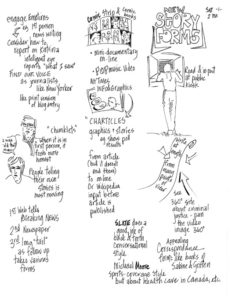
The group became a great brain dump of story forms that people have seen (and tried) that could be part of a richer mix of media both online and in print. Following are these ideas and some of the discussion about the challenges of getting “inverted pyramid” trained reporters to think of new ways to approach storytelling.
Some of the challenges:
- Getting reporters to get away from the idea that length determines their value (that you are more admired if you get to do the 20” story than if you do a rich cutline.)
- How to get narrative writing to be more emotional
- Creating a vocabulary about different story forms so that can be part of the conversation about covering a story, which form would best serve the reader
- J-schools still teach inverted pyramid as the predominant text / story form
- How can online be used to continually evolve a story – it doesn’t have to have a finite end.
- Why don’t newspapers do more photojournalism essays: It is a struggle to provide pictorial stories in print…can fall flat (at Newsday tried to do a year in the life of new immigrants, it didn’t really work
- One of the things we need from journalism education is how to be a wire service reporter for online…how to write the 3 paragraph story in 3 minutes, then add some more facts, then add some more…evolving report
- Challenges of writing great headlines, ones that hook you (Netscape homepage does this well)
- Maps are powerful story forms – need more map makers in newsrooms
- Look to the sports desk for inspiration about new story forms – they have a strong voice, do more visually.
- We need to reinvent campaign coverage (see notes from the “Master Narrative” group…)
- The “tails” for “tales”:
- The breaking news tale – what is happening
- The next day tale – what happened
- The long tail of the tale – reactions, feedback, comments, links…
Some of the ideas:
- Comic Strip: for an interview with a comic book artist, Matt Thompson at Fresno Bee online http://www.fresnobee.com/rites/mccloud/

- Pop-up Music Video: story about a woman leaving to go to Nashville, Matt Thompson at Fresno Bee online
- Info-graphics: creative use of infographics – ie: analysis of how many times Bush said particular words in his State of the Union speech
- Charticles: Charlotte said they are trying to figure out more stories that are best told visually – for example, explanatory stories like having a poll on growth with just a “chunklet” of story text and the rest of the story told with the graphic data
- 1st Person Narrative: Orlando sent two reporters to cover Katrina and asked that they write as eyewitnesses rather than typical reporters – “What I Saw”. New Yorker articles are exemplars of great 1st person writing.
- Blogging: Blogging is a story form in and of itself. Successful use of blogging online wouldn’t translate well to print – for example, the Sentinel had a blogger doing minute by minute updates about the shuttle launch – would not have been good in the paper, it was old. Matt talked about blogging the Vice President debates, could put in commentary and opinions, do live fact checking. Blogging in news sites often serve as a notes column which then become written up in more formal news article form.
- Roger Roy – Orlando Sentinel: http://blogs.orlandosentinel.com/news_nationworld_rogerroy/
- Wiki-reporting: Esquire reporter put a draft article about wikis on wikipedia and let the world edit it. http://en.wikipedia.org/wiki/WP:ITAAW
- Play with different designs: what if there was something like the Griffin and Sabine books – story told in letters – graphics
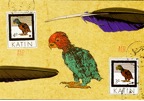
- Epistemological approach: Slate is good at using this dialogic form of storytelling
- Fast / vital facts: Provide a box with the fast facts, “what you need to know” for readers for any news story – Commercial Appeal
- Impact Box: Provide “why it matters” from different perspectives: ie: in a story on social security, try providing information like: here’s why it matters to you 24 year olds, to you 54 year olds, to you 74 year olds.
- Telling the story through sound and image: emotional content can sometimes best be made by getting the reporter out of the story and let the participants tell it.
- Back to School http://www.spokesmanreview.com/blogs/video/play.asp?file=090605_school2&filetype=swf
- Multimedia Obits http://www.spokesmanreview.com/library/valley/obits/cover.asp
- Sing it – don’t say it: I Did it Bi-Way – a column about the mayor of Spokane http://www.spokesmanreview.com/tools/story_pf.asp?ID=87504
- Making the Global Local: Snapshots – have a national / international news event put into local context (population comparison, size…) Memphis Commercial Appeal
- “A Thousand Words”: As in a picture is worth a thousand words – have some photos that make you go “hmmmm” (Memphis Commercial Appeal)
- “Life is Short: Autobiography as Haiku”: Washington Post http://www.washingtonpost.com/wp-dyn/content/article/2005/10/01/AR2005100101170.html?sub=AR
- Vidlogs: Use music and voices in the story presentation online: Rocket Boom http://www.rocketboom.com/vlog/ MN Stories http://www.mnstories.com
- News: The Screenplay: Try to put the words of a debate between two people in screenplay format.
- Play a game: City Council Survivor Game (vote off the city council people) – Topeka http://cjonline.com/survivor/
- A Tale from Two Sources: have two versions of an informational trip – Grand Canyon – New York Times http://www.nytimes.com/2005/10/06/science/sciencespecial2/06canyon.html?adxnnl=1&adxnnlx=1128813966-QJlaWLr/uF2wjxBa/w+L6g
- Mad Lib the State of the Union Address: why not…might make more sense
- Jib Jab the News: Washington / Washington State football rivalry http://www.komotv.com/news/story.asp?ID=34041
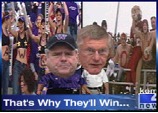
- Annotate the News: James Fallows did an annotation of the State of the Union in Atlantic, Jan. 23, 2004 *
- Harper’s Index: great story form, put takes a real knack to pull it off http://www.harpers.org/HarpersIndex2005.html **
- Animate the news: Mark Fiore’s editorial cartoon animations
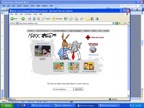
- Transparency: The reporter lets the audience in on how they reported the story. Christian Science Monitor.com “Reporters on the Job”. http://search.csmonitor.com/2005/1005/p06s01-wogn.htm ***
- Coming Attractions: Let the audience know what you are working on, elicit their input on the coming stories.
- Seattle Post-Intelligencer Editorial http://seattlepi.nwsource.com/opinion/
- Minnesota Public Radio’s Public Insight Journalism
http://minnesota.publicradio.org/publicinsightjournalism/
Huckleberries Online
http://www.spokesmanreview.com/blogs/nhb/
- Mini-docs: http://www.fresnobee.com/rites/creative/
- Attribution style: instead of breaking up the flow of a narrative with “according to…” do blanket attributions at the end of the story (Chicago Tribune – tornado)(AP story about woman who was kidnapped)
- Provide different viewpoints on the same page: Watch Blog http://www.watchblog.com/
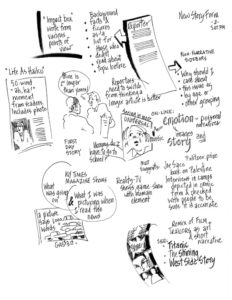
Memorable quotes:
- If print is going to be successful we have to find something that is distinctively our voice. Charlotte Hall
- We aren’t hearing enough authentic voices in print – their voices get filtered. Charlotte Hall
- We have to battle against the idea that your value is based on the length of the story. Charlotte Hall
- The emotional impact of photography is very powerful.
- Newspapers are hesitant to be snide, satirical, funny – how can you get reporters to do some things in a funny, light-hearted way? Chris Peck
- Do journalism educators need to throw out the inverted pyramid? No! but do teach multiple story forms.
- I challenge reporters to think about how they would tell this story to their mother, to their lawyer, to their 3-year-old. Charlotte Hall
- How do we write headlines that prompt action, that are a tease more than a sell. Chris Peck
- I got an anonymous note saying “I hope as you make the paper more visual that you won’t forget about long story starts on Page One.” Charlotte Hall
- We all have egos and want to do a good job. If we do these shorter forms, we need to get feedback. Florangela Davila
- Find and use those “learning moments” in the news. Chris Peck
* Atlantic Unbound | January 23, 2004
Politics
The State of the Union Address
Annotated by James Fallows, an Atlantic national correspondent and a former presidential speechwriter
…..
Mr. Speaker, Vice President Cheney, members of Congress, distinguished guests, and fellow citizens:America this evening is a nation called to great responsibilities. And we are rising to meet them. [The speech gets off to a mildly unusual start. Last year, the president opened with the one-two introductory combo that is standard for SOTU addresses. First, he reminded the audience of the historic importance of a president’s annual report to Congress; then, he revealed his judgment about how the “state of the union” stands. Last year, as a reminder, he said in the second paragraph of his speech that “our union is strong.” This year, the verdict doesn’t come until the sixth paragraph, below, where the union is now “confident and strong.”]
** Harper’s Index for September 2005
Posted on Monday, October 3, 2005.
Increase in the total value of U.S. residential property since 2000, expressed as a percentage of GDP : 60[Federal Reserve Board (Washington)/Bureau of Economic Analysis (Washington)]
Increase in the value of all U.S. stocks between 1995 and 2000, as a percentage of GDP : 59[U.S. Securities and Exchange Commission/Bureau of Economic Analysis (Washington)]
| *** | |
|||
from the October 05, 2005 edition – http://www.csmonitor.com/2005/1005/p06s01-wogn.html
Reporters on the Job• Tip of an Indonesian Iceberg: The genesis of today’s story about Indonesia’s battle to define Islam was prompted by a moment of curiosity, and became something of a revelation to correspondent Tom McCawley. Tom was working on another assignment with a photographer who mentioned that he’d seen a blockade outside the headquarters of Liberal Islam Network. Tom made a few calls, and realized he’d stumbled on a defining war of ideas. “It’s easy to cover breaking news events and not ever see these major subterranean battles between people with different visions of the same faith. It’s theoretical but there are real practical consequences,” he says. David Clark Scott, World editor |
||||
